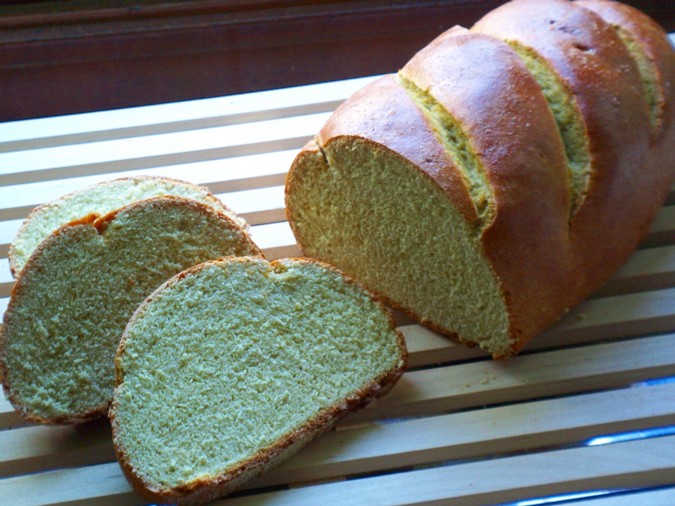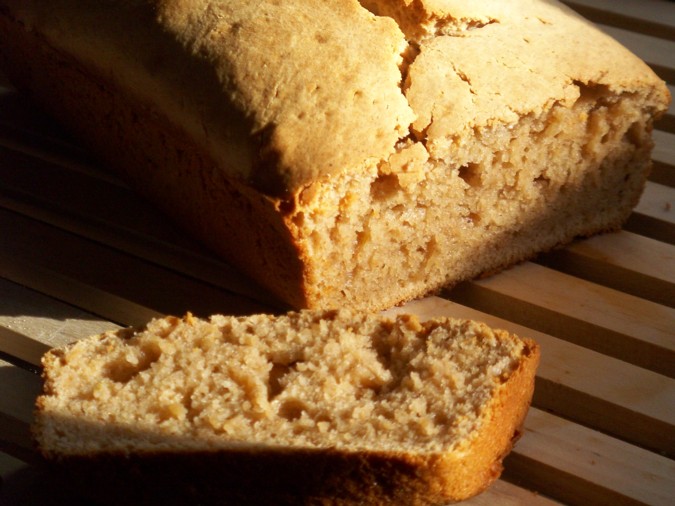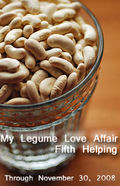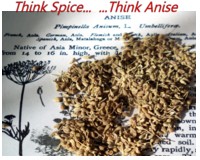Pea flour gives the crumb of this bread a delicate green tinge
This is my entry for bbd#14—a monthly event initiated by Zorra—hosted this time by Boaz at Grain Power whose theme is Colored Breads. I actually did not expect the final color of this bread would be this intensely green, and it was a pleasant surprise that even if baking had turned the crust a nice golden shade the crumb had still retained the green tones of the raw pea flour I used. The recipe is based on one published in 1919 which suggested several possibilities from pea to garbanzo to peanut flour. The bread tastes good, slightly reminiscent of the aroma of pea soup—not that surprising, actually—and even if unusual it is definitely pleasant. The texture of the crumb is soft and tight, so this bread works well for sandwiches or toasted to make croutons to serve with soups.
It is important to rely on how the dough “feels” to determine the right amount of water to use, since the rate at which the pea flour absorbs water can vary. You want a rather slack dough to avoid ending with a heavy and dry loaf. I found what to me seems the best way to make sure that the dough has the right amount of hydration, by adapting a method to treat garbanzo flour as it is used in the Italian region of Liguria to make farinata. The pea flour was mixed with water and let to rest overnight before adding it to the bread dough, and this made all the difference.
From the original recipe by: United States Dept. of Agriculture
In: “Farmers’ Bulletin”, 1919—USA
Ingredients
1 cup milk (or as needed), scalded and set aside until lukewarm
1-1/2 tsp salt
2 tbsp maple
1 cup pea flour (160g) + 1/2 cup water (Green pea flour is made by Bob’s Red Mill)
3 cups bread flour (375g ) (King Arthur)
1/2 tbsp yeast dissolved in 1 tbsp warm water
1 egg white mixed with 1 tbsp water to glaze
Mix the pea flour and 1/2 cup of water and let stand, covered, overnight. Then eliminate any foam that might have formed while the pea flour was soaking, and place the mixture in the bow of an electric mixer. Add the yeast dissolved in 1 tbsp water, the maple syrup and cooled milk and 1 cup of bread flour. Mix well at low speed and set aside, covered, until doubled in bulk. Add remaining flour, salt and enough extra milk or water to have a slack but well developed dough, mixing at slow speed until the dough holds together and is smooth and supple. Let rest and ferment, covered, until doubled in bulk, then shape into a loaf and let it ferment again until light. Brush with the egg white mixture and slash, then bake in a preheated 400F oven for about 50 minutes. Cool on a rack.













